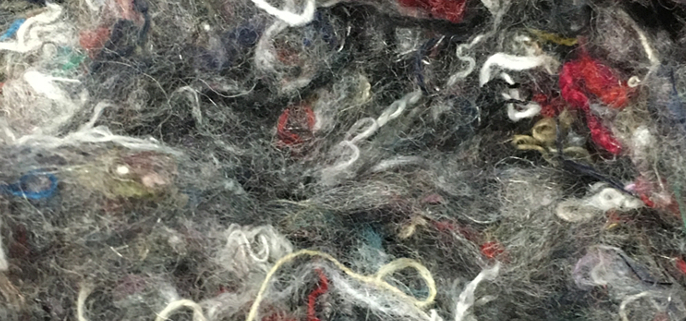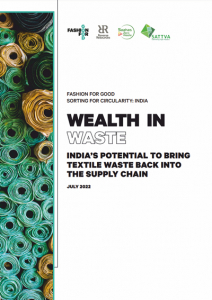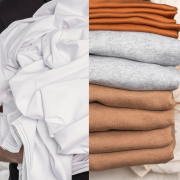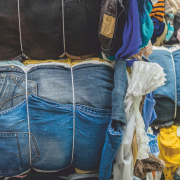Wealth in Waste: India’s Potential to Lead Circular Textile Sourcing
According to the Dutch organization Fashion for Good, the study “Wealth in Waste: India’s Potential to Bring Textile Waste Back into the Supply Chain” – released in July last year – is the most comprehensive analysis of the Indian textile waste landscape.
“India is in a unique position to leverage existing infrastructure and resources to emerge as a leader in capturing waste, implementing new sorting and recycling technologies, and reintroducing its textile waste back into the global market, securing its role as the leading circular sourcing region,” the press release said. Commissioned by Fashion for Good as part of the “Sorting for Circularity; India Project”, the study was conducted in collaboration with Sattva Consulting, Saahas Zero Waste and Reverse Resources, “specialist organizations in strategic impact, waste, resource and data management, and the scaling of textile recycling infrastructures”.
The report would attempt to fill the data gaps in the textile waste landscape in India to enable an effective transition towards circularity, the Netherlands-based organization informed. “By building a better understanding across three key streams, domestic post-consumer waste, pre-consumer waste, and imported waste, and by mapping stakeholders, geographical flows and recognizing challenges in the current infrastructure, the study aims to help ecosystem players to orchestrate actions and devise solutions and mediate accordingly.”
Opportunity for Indian players
Up to 7,800 kilotons of textile waste is accumulated in India annually. An estimated share of 51 percent originates from Indian consumers: post-consumer waste, with factory waste and offcuts. The volume of pre-consumer waste amounts to 42 percent, followed by imported waste that contributes a further seven percent. India’s textile waste accounts for 8.5 percent of the global total, the information said. “Only 59 percent of the textile waste in India finds its way back into the textile industry through reuse and recycling, with a mere fraction making it back into the global supply chain.”
As reported by Fashion for Good, a lack of strict regulation, informal, and in some cases non-existent traceability systems, excessive cost competitiveness and limited technological infrastructure to process certain types of waste has limited the potential of circular value chains so far. “Detailing the bottlenecks in the current processing of waste, the study identifies materials that can be ranked according to their best potential through a waste value hierarchy framework as well as actions that can push the materials up the hierarchy in the future.” Outlining the potential for collaborative and systemic interventions to fortify circularity in the Indian textile waste industry and reintroduce it into the supply chain, the study would present a three-step approach to driving this transition: enabling visibility and access to waste, harnessing the recycling potential of India, and establishing systems, infrastructure and regulations for waste management.
“Wealth in Waste: India’s Potential to Bring Textile Waste Back into the Supply Chain” was presented and launched in New Delhi in July 2022, during an industry-focused event in collaboration with Apparel Export Promotion Council (AEPC), Fashion for Good gave account. The event brought together key players and change-makers from across the value chain to present the study, and featured a panel discussion with industry leaders from Birla Cellulose, PVH Corp. and AEPC to discuss the findings and actions for the industry to implement.
The study “Sorting for Circularity; India Project”
The “Sorting for Circularity; India Project” is initiated by Fashion for Good and was launched in November 2021. The project is supported by project partners: Laudes Foundation as a catalytic funder, PVH Corp., Adidas, Levi Strauss & Co, TESCO, Primark, Arvind Limited, Birla Cellulose and Welspun India, and technology partner Reverse Resources.
As underlined, “Sorting for Circularity” is a framework conceived by the Dutch organization, with the aim to (re)capture textile waste, expedite the implementation of game-changing technologies, and drive circularity within the fashion value chain. Insights from the Fashion for Good and Aii (apparel impact institute) collaborative report “Unlocking the Trillion Dollar Fashion Decarbonization Opportunity”, which charts a trajectory for the industry to meet its net-zero ambition by 2050, would highlight the potential and significant impact on carbon emissions in the industry through material efficiency, extended and re-use of waste. “Building on these insights, Fashion for Good’s scope of work encompasses several, industry-wide, pre-competitive projects such as the Full Circle Textiles Projects – focusing on the recycling of man-made cellulosic fibers and polyester, amongst others, which tie into the net-zero ambition, and the greater goal of this project to close the loop on textile waste and reducing the industry’s environmental impact.”
www.reports.fashionforgood.com/report/sorting-for-circularity-india-wealth-in-waste/, www.fashionforgood.com
(Published in GLOBAL RECYCLING Magazine 2/2023, Page 34, Photo: Boer Group)










